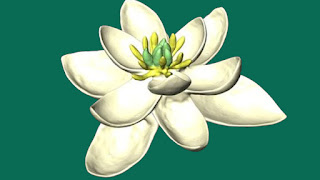The debut of flowers on the Earth’s stage remodeled terrestrial life to the purpose that 90 % of land plants reproduce through them. employing a immense data set of flowers and estimations of their family trees, a team of researchers from 5 continents has created a three-dimensional reconstruction of what the primary flowers most likely gave the impression of, at the side of some early steps in diversification.
According to a paper in Nature Communications, the ancestral flower was “bisexual and radially radially symmetrical, with quite 2 whorls of 3 separate plant organ organs every.” Bisexual to botanists means that they need each male and feminine sexual organs in one flower. The non-reproductive a part of the flower, as well as the petals and layers that defend the flower once it's budding.
To reach this conclusion, the authors took a sample of 792 species, spanning sixty three orders and 372 families of flowering plants. Relationships between these families were established through molecular clocks tag with fossil records. From these, they created chance estimates of the points in time wherever twenty seven floral traits emerged. variety of reconstruction ways were used, that gave consistent results for a few traits and divergent ones for others, giving the authors a high level of confidence in concerning 1/2 their conclusions, whereas others stay simply the foremost seemingly chance.
Among the long list of options the authors describe are a spiral arrangement for the feminine organs and also the theory that spore was shed towards the middle of the flower. “In spite of similarities with some surviving flowers, there's no living species that shares this actual combination of characters,” they write.
Creating this image could be a outstanding accomplishment considering however very little we all know concerning floral origins. Estimates of their beginning vary from a hundred and forty to 250 million years past, a colossal span of uncertainty, and that we don't have any fossil flowers older than one hundred thirty million years.




No comments:
Post a Comment